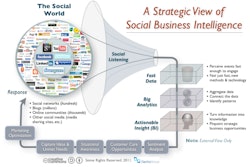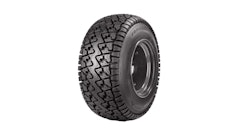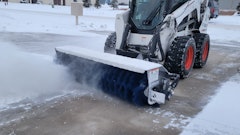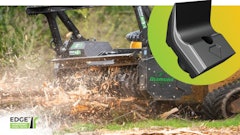
All leading market indicators suggest the economy is in full swing. Housing permits, housing starts, and housing closes are at near all-time highs. Supported with consumer confidence, a projected 3 percent GDP, and employment down across all U.S. regions. With extra cash in their pocket and an overall increase in the use of and demand for power tools, the industry can either rise in the tide like all other boats, or strategically grow market share and market penetration in key markets. Here are a few tips to help manufacturers, distributors, and dealers make a difference to the customers that matter most, the professionals.
1. Products Don’t Buy Products; People Buy Products
It is easy to fall into the trap of evaluating your success by only measuring Pro units sold year over year. Yes, building, shipping and selling product is a fundamental but it doesn’t tell the true story about your Pro customer base. This is the difference between a company that is product-centric versus audience-centric. After all, to grow your business you need to either get, keep, or grow the customer base. And if your base of customers is eroding, and yet your unit sales are growing, that would mean you are selling more to less. This is an omen for when the market starts to stall as they are less inclined to buy more, and you will need to over invest to get new ones in a time when your budget most likely will be reduced.
2. Develop a Scoring Model for Defining Your High-Value Customer
The definition of a high value customer can mean different things to different companies, but it’s certain that somewhere along the way the total margin generated during a time period is what matters most to management. For best practices outside of the B2B space, it is not uncommon to track RFM (Recency, Frequency, Monetary) as part of the formula. That learning can also be adapted for measuring Pro value. Since the distance between considered purchases are greater than say a cup of coffee, advanced analytics to measure value is required. Here is a use case to dramatize the notion assuming each Pro buyer bought different product categories at MSRP over time. Pro buyer A purchased 10 products 10 years ago, two products nine years ago, and then five products last year. Pro buyer B purchased 15 products 10 years ago, went dormant for nine years, and then bought two products last year. Pro buyer C bought 12 products from you for the first time this year. Pro buyer D bought one product each year for past 10 years. Which “Pro buyer” is your highest valued customer?
3. Build an Accumulating Base of Repeat Purchasers
It is common knowledge that getting your first customer is typically six times costlier than getting a current customer to make a repeat purchase. In order to grow a profitable Pro following, many companies forget that you need a constant flow and a greater amount of first time buyers
4. They Require More, They Deserve More
OPE and hardware dealers balance selling high volume and low margin vs. lower volume and high margin products to both the homeowner and the pro. It is a tricky situation as not all customers are created equal, not just from a product, parts, and service requirement, but also in terms of the buyer’s expected experience pre-sale, during the sale and post-sale. Like any good B2B company with a wide range of product categories serving a wide range of business occupations, the manner in which you make your content, in-store display, training and post-sale followup needs to be as relevant as possible. Pros live, eat and breathe their profession, and they feel that the product they buy must fit what they believe is only made for the nuances of their productivity. They don’t want generic. They want to be treated in a personal and professional manner, not like a revolving door of less-than-educated homeowners.
Provide them with digital access to manage their own fleet assets, give them a heads up on product warranties, empower them to build their own fleet wish lists, and personalize outbound communication efforts regarding seasonality service. Only load up web assets relative to their job function or based on past purchase history. Amazon does this and you can, too. These are just some of the value-add efforts they require and deserve.




















